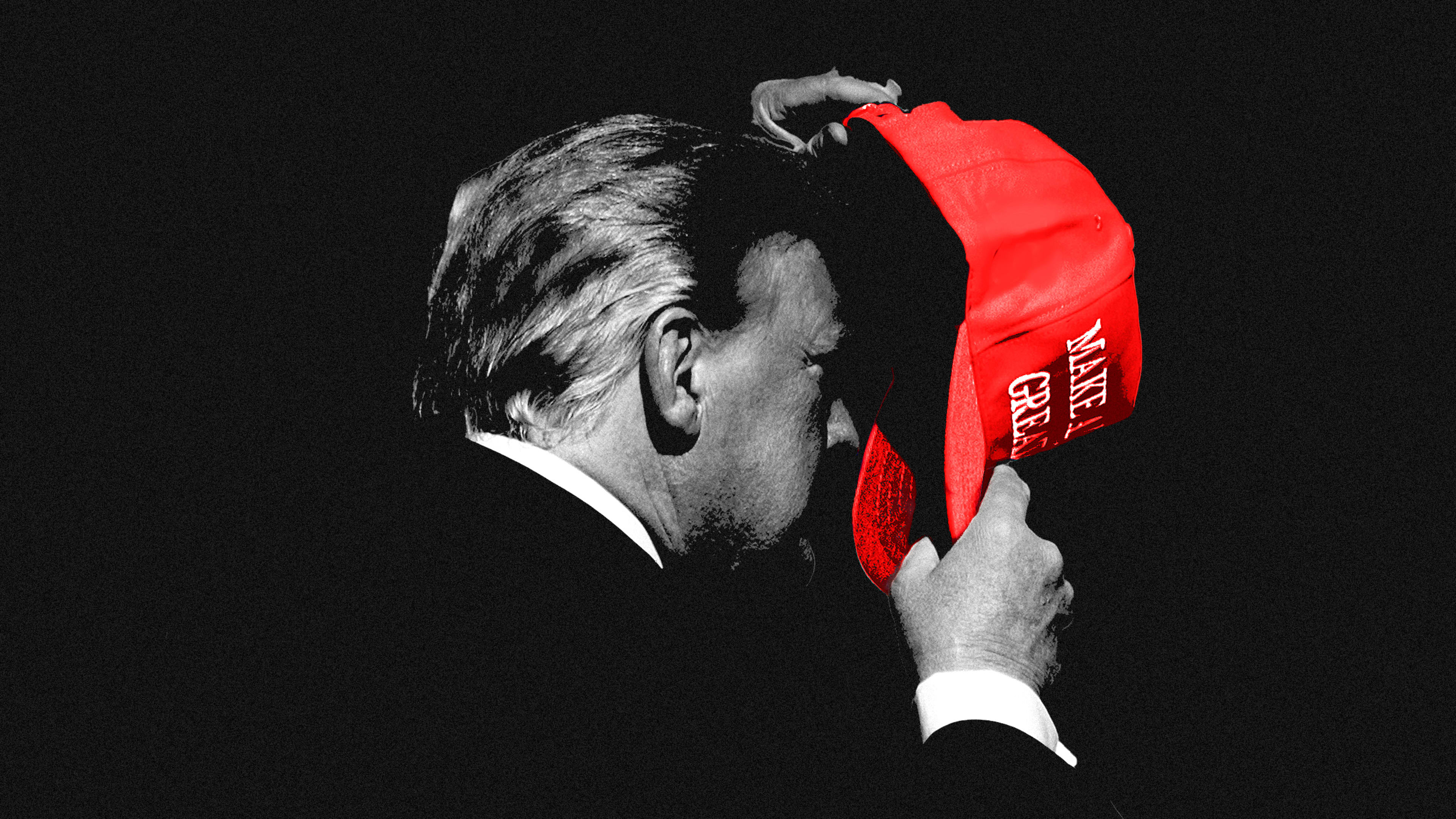He was the reality show president. The fluorescent orange president. The president with a comb-over coif that could neither be classified as hair nor as a toupee.
But ultimately, Donald J. Trump the caricature laid the foundation for a brand that emboldened and radicalized the right. Built atop the American flag, supported by stolen work, and intermixed with homegrown memes, Trump’s impact on political design will linger, even with President Joe Biden sworn into office.
To make his splash as a presidential candidate in 2015, Trump didn’t introduce a bold and poised new political brand, as did U.S. Representative Alexandria Ocasio-Cortez. He co-opted the brands of others, points out Forest Young, chief creative officer at brand consultancy Wolff Olins. That includes the sloppily made MAGA hat with a slogan from the Reagan administration, and the Space Force logo that was clearly built upon Star Trek. His fans have doubled down on sloppy design with homegrown memes ranging from Pepe the Frog to Trump as a greased-up, gun-toting Rambo.
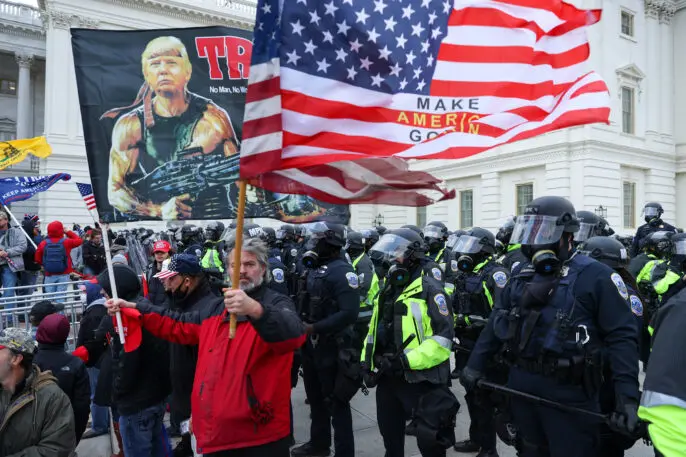
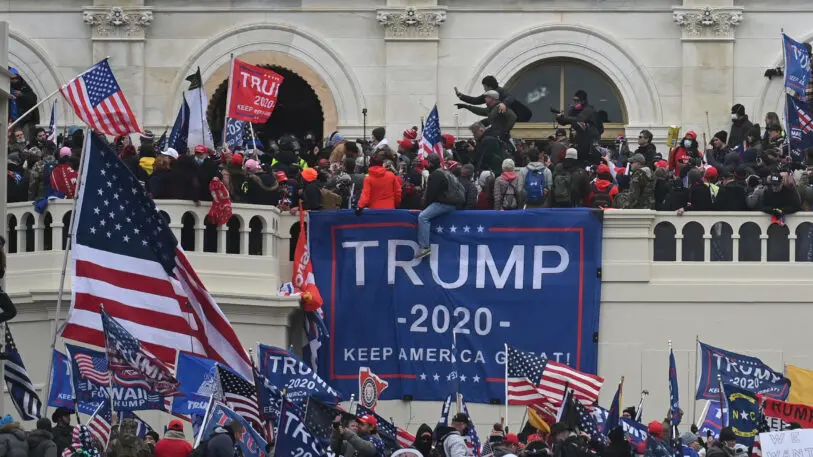
This hatred and disunity seeps beyond Trump the orator. Because the biggest coup of the Trump campaign was that he stole the brand of America itself.
“It is interesting you have all these symbolic elements—Viking symbolism, Pepe the Frog, these things exist in Parler, 4chan—but to me the most amazing thing Trump was able to do was he himself branded himself to be part of the flag,” says Young, pointing out how often Trump spoke in front of an oversize American flag, just like the famous scene in the movie Patton. Trump, once known for his gaudy penchant for gold, became synonymous with red, white, and blue.
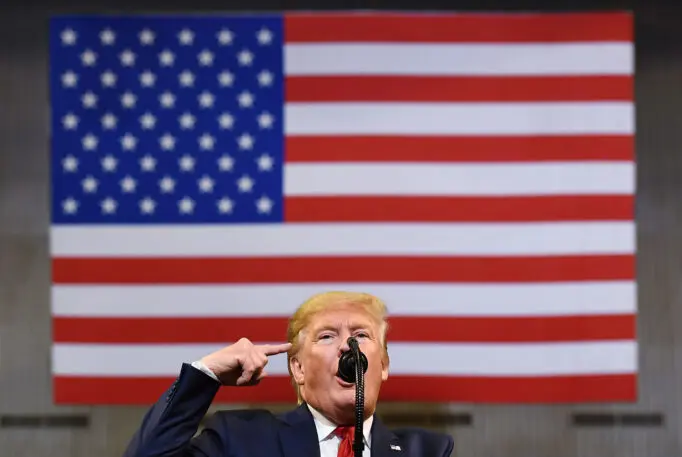
Perhaps every president wears the American brand for four to eight years, imbuing it with an ephemeral meaning that fades away with the next administration. But as Trump was drenching himself in America the brand, he was aggressively eroding its core principles. What feels so different about Trump is that through his constant support of the alt right—most recently calling those who stormed the Capitol “very good people”—the lines between Trump, America, and extremism have blurred. His failed attempt to invalidate Biden’s own presidential victory and remain in office was a dictatorship cherry on top.
“I was thinking about this idea of weaponized patriotism. This idea that the brand . . . of the country [that is] emblematic of the American ethos, especially the spirit of independence, has largely been co-opted by extremists,” Young says. “Literally, our national brand has been co-opted by extremists.”
The American brand hasn’t always been positive, especially on the international stage. For comparison, look back 17 years to the “America, Fuck Yeah!” mentality of Team America: World Police, which parodied how a George W. Bush-led U.S. looked to the rest of the world: as an obtuse imperial force that believed that an SUV and a few well-placed karate chops could somehow conquer the global war on terror. Under Trump, however, that red, white, and blue bravado has been aimed inward. It began a war to divide “true, conspiracy-decoding patriots” from “brain-washed, science-abiding liberals.”
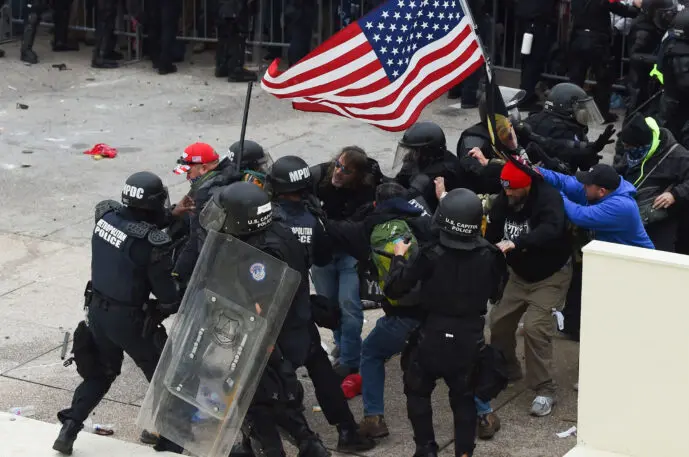
To undo such entrenched, weaponized patriotism is a challenge beyond any singular rebranding campaign. These visual symbols are now stitched into our culture. As Young points out, the MAGA hat itself is an icon of a deep belief system with no contemporary equal.
Despite the pussy hats, the buttons, and the swag of the left, no design has successfully sliced through Trump’s wild, conspiracy-driven misinformation campaign. The design of the left is good at reaffirming its values, but bad at changing anyone’s mind who feels differently.
“Bless many designers for making fundraising hats and T-shirts that are beautifully designed . . . [but I get the] feeling that we’re somehow complicit in what’s unfolded. Our degree of needing an audience means that we’re largely going to be speaking to people who will be giving us a welcome reception,” says Young, who suggests design needs to step up to fight misinformation head-on. “One of the things that stands out is the need for somebody to reach a large number of people who are confused, hypnotized by QAnon, or largely undecided about where they stand.”
The lingering aesthetic impact of Trump is a pile of plagiarized designs and homegrown memes, intermixed with the official national brand he co-opted. This language of symbols is framed as patriotism, but as we saw so clearly in Washington, D.C., on January 6, it’s really a mask for fear and a beacon of prejudice.
“It’s only recently that [the Confederate] flag has itself begun to lose acceptance in many parts of this country, and I can only hope that the Trump aesthetic meets the same reckoning,” Ipcar says. “There’s nothing laughable or good about it. It does the job. It follows the rules of visibility and contrast. It’s popular. And It’s dangerous. It’s the aesthetics of hate.”
Recognize your brand’s excellence by applying to this year’s Brands That Matter Awards before the early-rate deadline, May 3.
